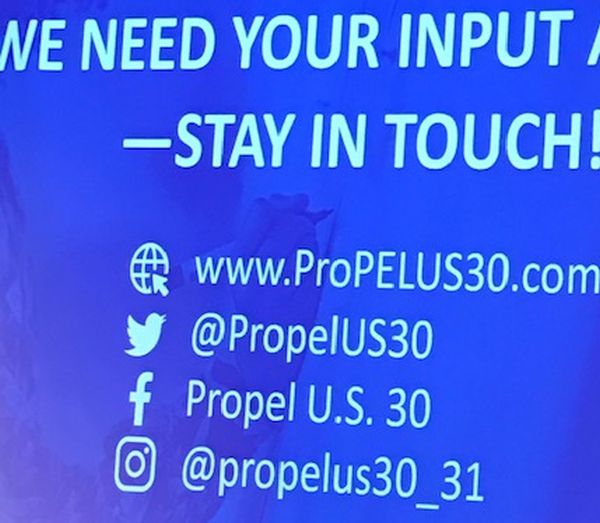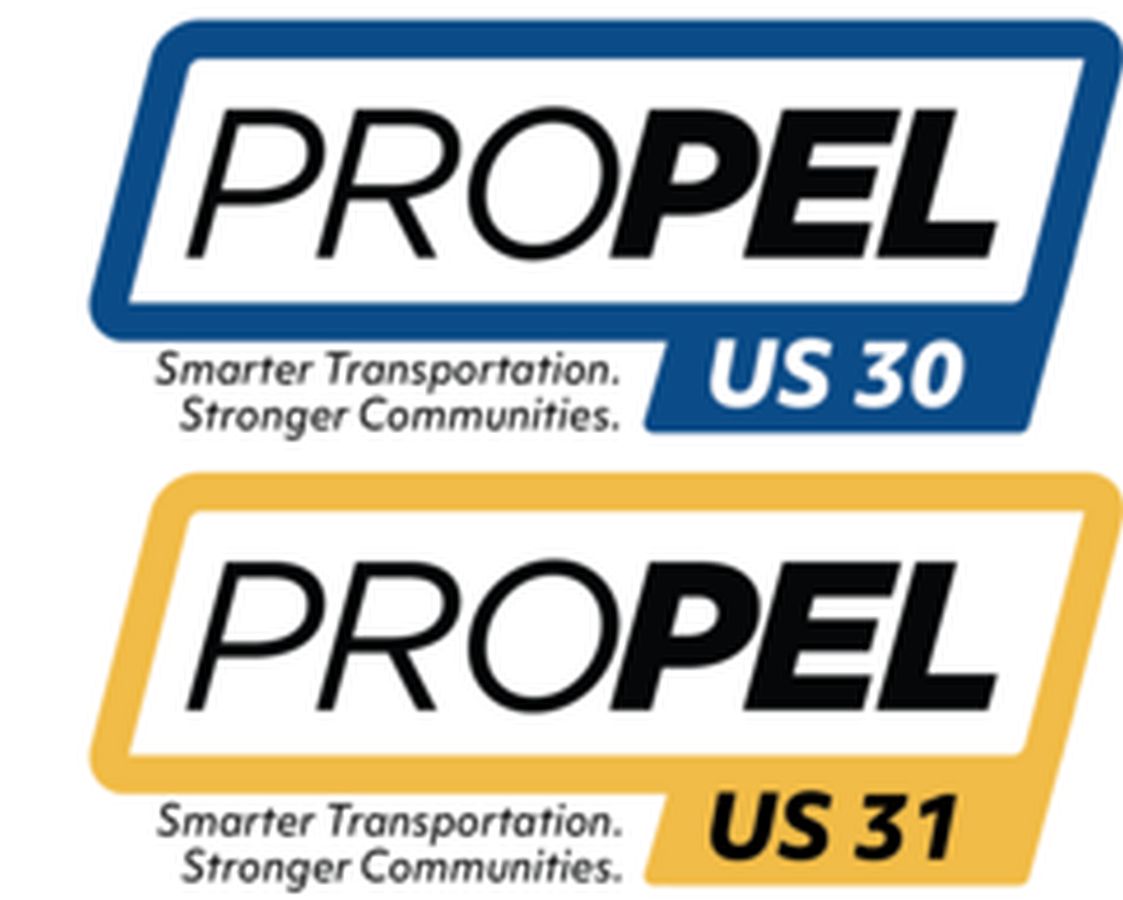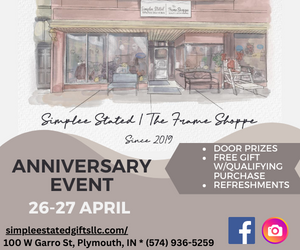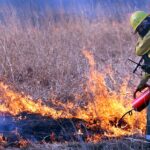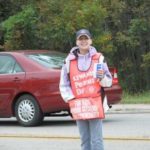The Indiana Department of Transportation conducted its second public meeting on the Propel U.S. 30 & U.S. 31 projects Monday evening in the Argos High School. About 50 people attended the open house and presentation. Marshall County Commissioner Kevin Overmyer, Plymouth City Council members Robert Listenberger and Jeff Houin, and Argos Town Council member Randy Snead were in attendance.
CMD Smith is the engineering firm hired by INDOT to conduct the PEL Study. The PEL is Planning and Environmental Linkages, a collaborative and integrated approach to transportation decision-making that considers environmental, community, and economic goals early in the planning process. The PEL process carries the information, analysis, and products developed during planning forward into the environmental review process.
Brett Lackey, Project Manager from CMD Smith discussed the study details. He summarized the work that has been done since the first meeting and said, “We are thrilled that more than 350 community members have engaged with the study, and they have done so in a variety of ways. We’ve had two public meetings, one was in person, and also a virtual experience that allowed folks to participate when it was convenient for them. We’ve hosted 11 community office hours so far, where we are out in the community twice a month at rotating locations in order to answer your questions and take your comments through one-on-one conversations.” They are also attending community outreach events to meet residents where they are as well as chatting with business owners, farmers, local elected officials, school districts, resource agencies, and the U.S. 30 and U.S. 31 Coalitions.
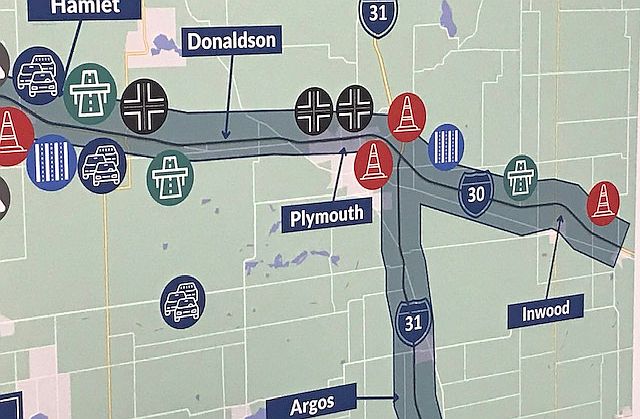
With more than 400 public comments, they have focused on a variety of topics but the top three have been, access to and across U.S. 30 and U.S. 31 was most frequently mentioned as a concern with 28% of all comments. The need to preserve the rural character and support farming was second with 18% of the comments and safety was third with 17% of all comments.
In response to the comments the study has reviewed past plans, collected traffic data, spent time in the corridor to view the issues firsthand, and met with local economic development professionals. The feedback gathered was used to form the transportation issues and design outcomes. Neither roadway experiences congestion and Lackey noted that on U.S. 30 1/3 of the traffic is truck traffic while on U.S. 31 about a quarter of the traffic is truck traffic.
In response to the safety concerns, the data showed between 2017 and 2021 there were more than 1,200 crashes in the study area with most of the crashes being rear-end or right-angle crashes. Data collected over the 5 years showed 5 fatal accidents and 118 personal injury accidents. Driveways and intersections on the highways constitute 39% of all crashes. 152 driveways access U.S. 30 or U.S. 31 creating potential safety concerns. Ninety-three driveways, or 61% of the total of all driveways need to better reflect INDOT’s access management guidelines improving safety.
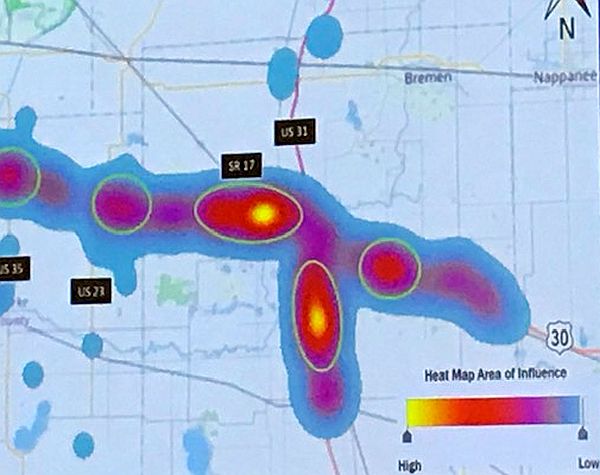
The PEL study has determined that some infrastructure on 30, such as some ramps, some bridges, and some of the medians need spot upgrades.
When asked why the need to make changes on U.S. 30 & U.S. 31 the PEL Study addresses issues of conflict points of safety. They want to improve safety and reduce the number of and severity of crashes.
Nine goals have been developed based on the input received. Those goals are:
Provide transportation infrastructure that supports the local economy and economic development goals.
Improve safety by reducing turning and crossing conflicts.
Improve the safety of local access points.
Maintain the character of the local communities in the corridor.
Provide equitable solutions that consider the needs of traditionally underserved and disadvantaged communities.
Accommodate non-vehicular modes of travel within and crossing the U.S. 30 corridor.
Support emerging technologies related to infrastructure.
Identify fiscally responsible improvements that avoid or minimize impacts on the human and natural environment.
Align investments with staples.
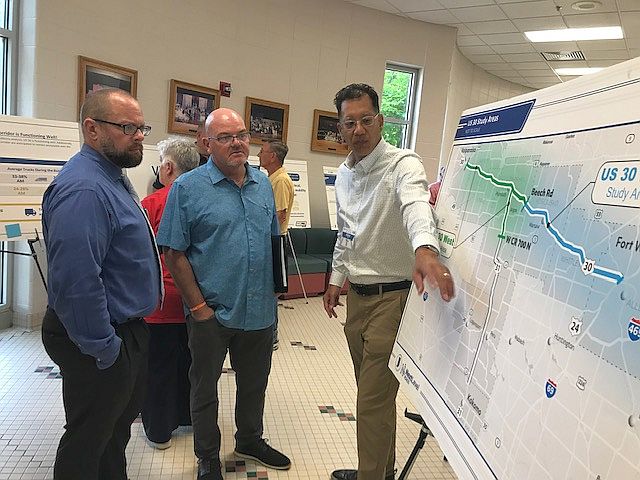
This summer they will start to identify and evaluate potential solutions and release a draft for public review. In the winter of 2023, a second public meeting will be held, and draft results of the alternatives will be released to the public. In late spring or early summer 2024, the alternatives will be narrowed down to more realistic results and the public will have a chance to review and comment on them.
Input from the communities is important and comments are being accepted until July 31st.
